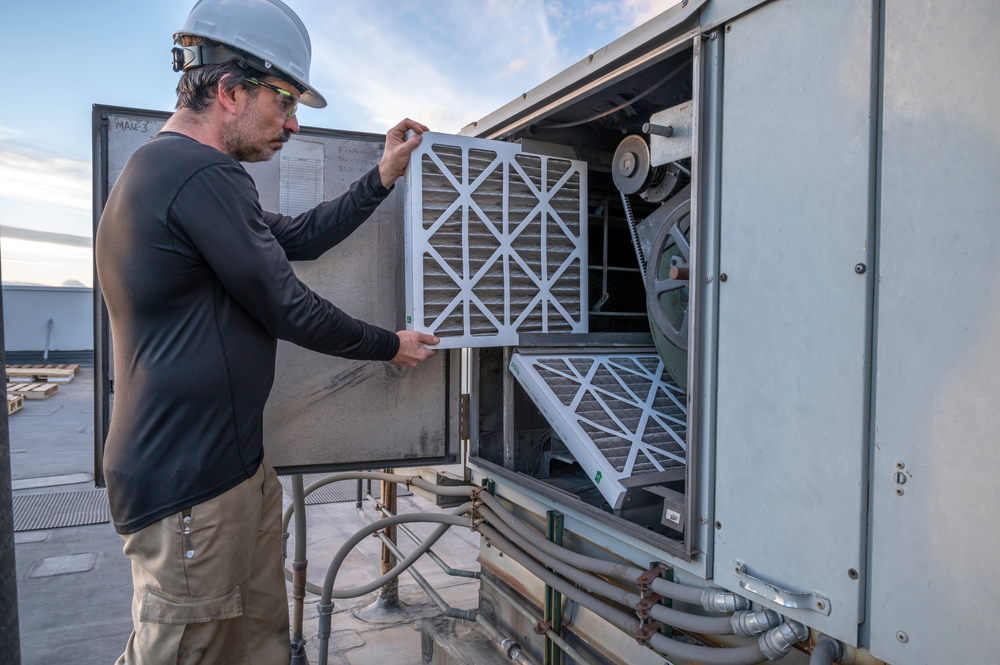
Are Swamp Coolers Cheaper to Run Than Air Conditioners?
August 2, 2023 2:16 pm Leave your thoughtsWhen it comes to cooling our homes or offices, efficiency and cost are paramount considerations. The debate between swamp coolers and air conditioners has gained prominence in recent years. While both provide relief from scorching temperatures, their approaches to cooling markedly differ, resulting in varying energy usage and costs.
In this comprehensive blog, we delve into the fascinating world of cooling technologies to determine whether swamp coolers truly outperform conventional air conditioners in terms of cost-efficiency. Join us as we analyze each system’s intricacies and energy consumption and reveal which cooling solution could be the most economical choice for you.
Understanding Swamp Coolers (Evaporative Coolers)
The Science Behind Swamp Coolers
Swamp coolers, also known as evaporative coolers, exploit a natural process called evaporative cooling to reduce ambient temperatures. These systems work on the principle that when water evaporates, it absorbs heat energy from the surrounding air, thus creating a cooling effect.
Mechanism of Operation
Swamp coolers consist of a fan, water reservoir, and cooling pads. The fan draws hot, dry air from outside, which passes through the cooling pads soaked in water. As the air traverses the moist pads, some of the water evaporates, absorbing heat from the air and reducing its temperature. Finally, the cooler air is blown into the space, providing relief from the heat.
Comparing Air Conditioners with Swamp Coolers
The Basics of Air Conditioning
Air conditioning systems, on the other hand, work based on the refrigeration cycle. These systems use refrigerant to transfer heat from the indoor space to the outdoor environment, resulting in a cooling effect.
Energy Efficiency and Power Consumption
When comparing the energy efficiency of swamp coolers and air conditioners, it’s essential to consider their power consumption. Swamp coolers consume significantly less electricity compared to traditional air conditioners. The primary reason lies in the difference in the cooling mechanisms employed.
Swamp coolers rely on the evaporation of water, a process that requires far less energy compared to the extensive refrigeration cycle employed by air conditioners. Consequently, evaporative coolers can operate using just one-fourth of the energy consumed by air conditioners, depending on the prevailing environmental conditions.
Factors Influencing Cost Efficiency
Operating Costs
Swamp coolers are generally cheaper to operate due to their lower energy consumption. However, multiple factors can influence the operating costs of both swamp coolers and air conditioners.
– Climate: Swamp coolers work effectively in dry climates with low humidity, as evaporation becomes less efficient in humid conditions. On the other hand, air conditioners are better suited to areas with high humidity levels.
– Initial Investment: While swamp coolers typically have lower upfront costs than air conditioners, the expenses associated with ductwork installation and maintenance might influence the overall affordability.
– Maintenance: Both systems require regular maintenance to ensure peak performance. However, swamp coolers are typically easier and more cost-effective to maintain than air conditioners, as they have fewer intricate components.
– Lifespan: Air conditioners generally have a longer lifespan compared to swamp coolers, which can mean higher replacement costs in the long run.
Incorporating Energy Costs
Energy Rates and Consumption
Energy costs significantly impact the overall efficiency and expenses associated with running cooling systems. Electricity rates vary from region to region, making it crucial to consider the specific charges applicable to your area.
Since air conditioners consume more electricity, they tend to have higher operating costs, regardless of the energy rates. However, the disparity in expenses between the two cooling systems can be more pronounced in regions with high electricity costs.
The Verdict: Cost Efficiency Revealed
Choosing the Optimal Solution
Swamp coolers undeniably stand out as the more cost-efficient option for certain geographical regions and specific requirements. In arid regions with low humidity, where electricity prices are relatively high, swamp coolers can provide significant savings in energy costs and overall operation. Similarly, swamp coolers often provide a more affordable solution for spaces with open floor plans or significant air exchange.
On the other hand, air conditioners excel in areas with high humidity levels or where swamp coolers may not be practical, such as buildings requiring sealed environments or in densely populated urban areas.
Contact Premier Industries, Inc. Today
Deciding which cooling system suits your needs requires careful consideration of factors like climate, energy rates, and long-term expenses. At Premier Industries, Inc., we specialize in providing personalized cooling solutions tailored to your specific requirements.
Contact us today to speak with our experts, who can guide you in choosing the most cost-efficient cooling system that aligns with your budget, geographical location, and cooling preferences. Experience cool comfort without breaking the bank with Premier Industries, Inc.
Categorised in: Swamp Cooler
This post was written by Mike Nicolini
